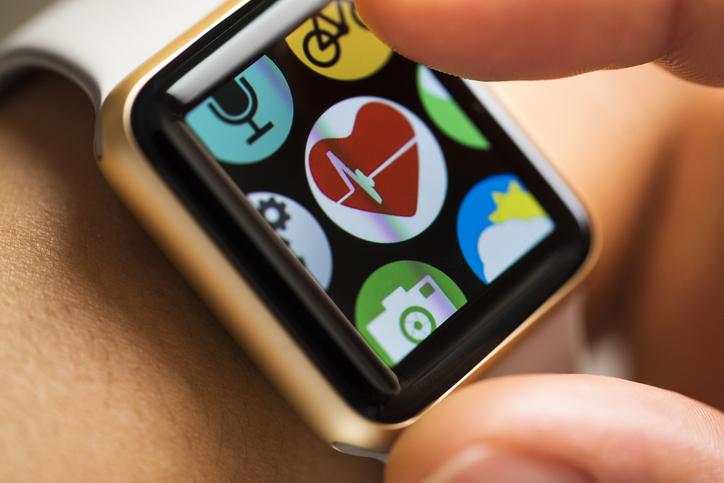In today’s fast-evolving healthcare landscape, the amalgamation of cutting-edge technology with medical expertise has given rise to a revolution in patient care and healthcare management. At the forefront of this digital transformation are “Medical Apps,” applications designed to run on various devices such as smartphones and tablets. These Medical Apps have not only brought about a paradigm shift in how we perceive healthcare but have also become indispensable tools in facilitating personalized, efficient, and accessible healthcare services.
In this article, we delve into the critical domain of seamlessly integrating Medical Apps with existing healthcare systems. This process involves harmoniously blending the capabilities and functionalities of Medical Apps with the infrastructure of established healthcare systems. Targeted toward potential clients seeking to optimize healthcare delivery, our exploration aims to shed light on the importance of integration and its role in establishing a cohesive healthcare ecosystem.
Understanding the Landscape of Medical Apps
Medical Apps represent a diverse spectrum of applications catering to an array of healthcare needs. From assisting in fitness tracking and mental well-being to managing medication schedules and monitoring chronic conditions, these applications provide a comprehensive solution for users. The proliferation of smartphones and the widespread availability of high-speed internet have significantly contributed to the widespread adoption of these applications, making them an integral part of contemporary healthcare.
The transformative potential of Medical Apps lies in their ability to empower users, enabling them to actively manage and monitor their health. Users can track vital signs, set medication reminders, schedule appointments, and even consult healthcare professionals remotely – all through their handheld devices. This seamless accessibility and user-centric approach to healthcare foster a proactive attitude towards health management.
However, integrating Medical Apps into existing healthcare systems presents its own set of challenges. It necessitates a profound understanding of integrating diverse technologies, ensuring data privacy and security, and delivering a user experience that seamlessly fits into the existing healthcare ecosystem. In the ensuing sections, we will delve deeper into these challenges, explore the best practices for successful integration, and present case studies illustrating successful integration endeavors. These insights are aimed at guiding potential clients towards an informed and efficient integration of Medical Apps, ultimately enhancing the healthcare landscape.
Challenges in Integrating Medical Apps
The integration of Medical Apps into established healthcare systems is a complex endeavor that is accompanied by a myriad of challenges. One of the primary hurdles is achieving interoperability, the ability of different systems to communicate, share, and interpret data effectively. Healthcare systems often operate on diverse technologies, standards, and data formats. Therefore, harmonizing these disparate elements to achieve seamless integration is a multifaceted task.
Furthermore, ensuring data security and privacy is a paramount concern in healthcare integration. Given the sensitive nature of medical data, strict measures must be in place to protect patient information. Compliance with healthcare regulations, such as the Health Insurance Portability and Accountability Act (HIPAA) in the United States, adds an additional layer of complexity to the integration process.
Another challenge arises from the diverse user base of Medical Apps. These applications cater to individuals with varying levels of technological proficiency. Designing a user interface that is intuitive and caters to a wide range of users, while delivering a seamless experience, is a significant challenge. Additionally, aligning the app’s features and functionalities with the specific needs and workflows of healthcare professionals and institutions requires careful planning and collaboration.
Addressing these challenges demands a comprehensive approach that combines technological expertise, regulatory compliance, user-centered design, and effective collaboration between healthcare and technology domains. By understanding and proactively mitigating these challenges, potential clients can pave the way for a smooth and successful integration of Medical Apps into their existing healthcare systems. In the subsequent sections, we will explore the best practices that can help overcome these hurdles and achieve seamless integration, ultimately enhancing the healthcare ecosystem.
Best Practices for Integration
The successful integration of Medical Apps into existing healthcare systems necessitates adherence to a set of best practices. Search Engine Optimization (SEO) plays a pivotal role in enhancing the visibility and discoverability of the integrated Medical App. SEO involves optimizing the content and structure of the application to improve its ranking on search engine results pages.
Incorporating relevant keywords related to healthcare, medical apps, and specific functionalities within the app’s content is a fundamental aspect of SEO. These keywords should be strategically placed in the app’s description, titles, subtitles, and other pertinent sections. By doing so, the app becomes more discoverable to users searching for healthcare solutions on various search engines.
Optimizing meta tags, including the title and description, is equally important. Meta tags should provide a concise yet informative summary of the app, containing the primary keywords to attract the target audience. This optimization enhances the app’s visibility in search results and influences users to click and explore further.
Structuring the content with appropriate headings and subheadings improves not only the readability but also the SEO of the app. Clear headings and subheadings make the content scannable, aiding both users and search engines in understanding the app’s features and functionalities.
Additionally, user reviews and ratings are influential factors in app visibility. Encouraging satisfied users to leave positive reviews and ratings can significantly boost the app’s credibility and ranking.
In summary, integrating SEO best practices during the integration process ensures that the Medical App is not only seamlessly integrated into the healthcare system but is also optimized for maximum visibility. This strategic approach assists potential clients in achieving a wider reach and attracting more users to their integrated Medical App, ultimately enhancing the effectiveness and impact of healthcare delivery. In the following sections, we will delve into key considerations and successful integration case studies to provide a comprehensive understanding of achieving seamless integration.
Key Considerations for Effective Integration
Integrating Medical Apps into existing healthcare systems necessitates careful consideration of several key factors to ensure a seamless and effective fusion of technology with healthcare processes.
Data Security and Privacy
Given the sensitive nature of healthcare data, ensuring robust data security and privacy measures is paramount. Compliance with stringent regulations, such as HIPAA in the United States, is imperative. Encryption of data during transmission and storage, regular security audits, and access controls are critical components in safeguarding patient information.
Interoperability and Standards
Adherence to industry standards and interoperability frameworks is fundamental for successful integration. Utilizing widely accepted standards allows for seamless communication and data exchange between different healthcare systems and devices. This interoperability is vital for creating a cohesive healthcare ecosystem.
User-Centric Design
Understanding the unique needs and preferences of both healthcare professionals and patients is essential in designing a user-centric interface. Tailoring the app’s interface, functionalities, and overall user experience according to the specific user groups ensures a positive reception and consistent usage of the Medical App.
Workflow Alignment
Aligning the app’s functionalities with the workflows of healthcare professionals is crucial for integration success. The app should seamlessly fit into existing workflows, enhancing efficiency and minimizing disruptions to healthcare processes.
Scalability and Flexibility
The integrated solution should be designed with scalability in mind to accommodate future growth and changing healthcare needs. Additionally, it should be flexible to adapt to evolving technologies and healthcare standards.
Training and Support
Providing adequate training and ongoing support to healthcare professionals and users is essential. Clear instructions and accessible support channels ensure that users can maximize the benefits of the integrated Medical App and navigate any challenges effectively.
By meticulously addressing these considerations, potential clients can lay a strong foundation for a successful integration process. A thorough understanding of these critical aspects ensures a smooth transition and ultimately contributes to enhanced patient care and improved healthcare outcomes. In the subsequent sections, we will explore successful case studies, shedding light on the transformative potential of seamless integration and its positive impact on healthcare delivery.
Success Stories: Examples of Seamless Integration
To grasp the potential and impact of seamless integration, let us examine a few success stories where medical apps have been seamlessly integrated into existing healthcare systems.
Case Study 1: Remote Patient Monitoring
A prominent healthcare institution successfully integrated a remote patient monitoring app into their existing electronic health records (EHR) system. The app allowed patients to input vital signs and health data, which were seamlessly synced with their EHR profiles. This integration facilitated real-time monitoring of patients’ health conditions and enabled healthcare professionals to intervene promptly if needed, ultimately enhancing patient care and satisfaction.
Case Study 2: Medication Adherence App Integration
Another case involves the integration of a medication adherence app with a healthcare provider’s system. The app sent medication reminders and recorded patients’ adherence data, which seamlessly integrated with the provider’s EHR. This integration led to improved medication adherence rates, reduced hospital readmissions, and better medication management.
These success stories highlight the transformative potential of seamlessly integrating medical apps into existing healthcare systems. By drawing insights from such cases and leveraging the right strategies, potential clients can envision the positive impact and potential advancements that await in their pursuit of integrating medical apps effectively. The subsequent sections will delve into the role of professional software development companies in achieving this seamless integration and recommend New York Software Developers for those seeking reliable expertise in medical app integration.
The Role of Professional Software Development Companies
Achieving seamless integration of medical apps with existing healthcare systems necessitates expertise and specialized knowledge in both healthcare and software development domains. Professional software development companies play a pivotal role in ensuring the success of integration projects. These companies possess a dedicated team of skilled developers, UX/UI designers, and project managers who understand the intricacies of healthcare systems and the unique requirements of medical apps.
Software development companies offer a holistic approach to integration, starting with a comprehensive analysis of the existing healthcare infrastructure. They work closely with healthcare stakeholders to understand the workflow, data flow, and specific needs of the healthcare institution. Leveraging this understanding, they design and develop customized solutions that seamlessly integrate the medical app with the existing systems while ensuring compliance with regulatory standards and data security protocols.
Moreover, these companies provide ongoing support and maintenance post-integration, ensuring the optimal performance and functionality of the integrated medical app. Their expertise and experience in the field make them invaluable partners in the journey to achieving a cohesive and efficient healthcare ecosystem through seamless integration.
Why Choose New York Software Developers
When it comes to selecting a reliable partner for medical app integration projects, New York Software Developers stand out for their proven track record and expertise in the healthcare software development domain. With a deep understanding of the unique needs of the healthcare industry, they bring a wealth of experience in seamlessly integrating medical apps with diverse healthcare systems.
New York Software Developers prioritize client collaboration and a personalized approach, ensuring that each integration project is tailored to meet the specific requirements and objectives of the healthcare institution. Their commitment to data security, adherence to industry standards, and focus on user-centric design make them a trusted choice for potential clients seeking a seamless integration process.
By partnering with New York Software Developers, potential clients can confidently embark on their journey towards integrating medical apps into their existing healthcare systems, knowing that they are in capable hands and that the outcome will align with their vision of enhanced patient care and operational efficiency.
Conclusion
In conclusion, the integration of medical apps with existing healthcare systems is a transformative endeavor that holds immense potential for enhancing healthcare services and improving patient outcomes. Understanding the landscape of medical apps, acknowledging the challenges of integration, and implementing best practices are essential steps toward achieving seamless integration.
By incorporating SEO best practices, adhering to critical considerations for integration, and learning from successful case studies, potential clients can navigate the complexities and ensure a successful integration process. Moreover, partnering with professional software development companies like New York Software Developers can significantly streamline the integration journey and lead to the creation of a cohesive and efficient healthcare ecosystem.
Seamless integration is not merely a technological achievement but a step towards a future where technology seamlessly supports healthcare, fostering a healthier and more informed society. As potential clients explore integration possibilities, New York Software Developers stand ready to be their trusted partners in this transformative healthcare journey.




